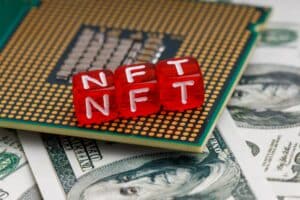The rise of non-fungible tokens (NFTs) has revolutionized the art business and how we perceive ownership and value in the digital world and thus, a new wave of NFT crimes has become the norm. NFTs, which are unique digital assets recorded on a blockchain, have become a popular way to purchase, sell, and trade digital art, collectibles, and other digital assets. However, as the NFT market has grown, so have the number of legal actions and morally questionable actions taken by NFT creators.

It is crucial for individuals looking to invest in NFTs to be aware of the risks involved and to conduct thorough research before making any investments. Due to the largely unregulated nature of the NFT market, it is especially important to be cautious and to do your due diligence. The high-profile cases of NFT creators facing charges of fraud or legal action serve as a reminder that, even in the exciting world of NFTs, the old adage “buyer beware” still applies.
In this analysis, we will examine some of the notable NFT creators currently facing legal action in relation to their creations. By understanding these specific cases and the underlying issues, individuals can make more informed decisions about their own NFT investments. Additionally, we will look at alternative solutions to NFTs that exist solely on the blockchain that address the problems inherent in NFTs.
NFT Crimes: Bored Ape Yacht Club (BAYC)

The Bored Ape Yacht Club (BAYC) project, developed by Yuga Labs, has garnered significant attention in the realm of digital collectibles. The project, which began with the creation of 10,000 unique digital apes, each with its own distinct design and minted on the Ethereum blockchain, has seen a marked increase in demand for its limited supply of NFTs, leading to a corresponding surge in their value. However, this success has been accompanied by legal disputes, particularly with conceptual artist Ryder Ripps, who has been accused by Yuga Labs of a “calculated, intentional, and willful” scheme to damage BAYC through the sale of duplicates of its NFTs.
This lawsuit raises intriguing questions regarding the application of copyright law to crypto art, as well as the overall security of investments in crypto NFTs. Ripps has framed his work as a commentary on the power of NFTs to alter meaning, establishing provenance, and evade censorship, through the lens of appropriation art. Meanwhile, Yuga Labs has alleged that Ripps’ actions constitute a deliberate effort to harm the company, and has called for financial damages and a court order demanding the cessation of infringing on BAYC’s work, including a prohibition on the use of “confusingly similar” domain names that implied these new domains belonging to Ripp were the original artist’s website of the Bored Ape collection. The resolution of this lawsuit will likely have wide-reaching implications for the world of digital NFT as well as the application of intellectual property law in the realm of blockchain technology.
The Originality of Digital Art in the NFT Era
Furthermore, the lawsuit highlights the issue of originality in the digital art world, specifically in the realm of NFTs. The BAYC project’s distinct design and unique apes make it a highly sought-after item, and the lawsuit against Ripps is an attempt to protect the project’s originality and integrity. However, the case raises questions about the extent to which digital art can be considered original, as blockchain technology allows for the creation of an infinite number of copies.
The lawsuit brings into focus the still-developing legal framework surrounding NFTs and digital art. The use of blockchain technology in the art world is still a relatively new concept and the laws surrounding it are still evolving. This lawsuit could serve as a precedent for future cases involving similar disputes.
NFT Crimes: Tarantino and Miramax The Legal Ambiguities of NFTs
The recent lawsuit involving renowned director Quentin Tarantino and production company Miramax serves as another example of the ongoing legal ambiguities surrounding the use of NFTs. The lawsuit, filed in a California court, alleges that Tarantino’s NFT collection, which is based on his film Pulp Fiction, constitutes a violation of Miramax’s copyright and trademark. The collection is purported to include blockchain tokens associated with high-resolution scans from the original handwritten screenplay of the film, as well as a drawing inspired by a specific scene.
Miramax claims that NFTs do not fall under the scope of Tarantino’s reserved rights for the film, as outlined in the contractual agreement between the parties. Specifically, the company argues that the limited rights granted to Tarantino for interactive games, live performances, and other ancillary media, do not extend to the creation and sale of NFTs linked to the film’s screenplay. Furthermore, Miramax asserts that the use of Pulp Fiction branding and imagery in the NFT collection is likely to create confusion among buyers, who may mistakenly believe that the NFTs are official Miramax products.
The bigger issue at hand is not just Tarantino’s NFT lineup specifically, but the precedent it could set for other filmmakers. Miramax is concerned that Tarantino’s conduct may mislead other creators into believing they have the right to exploit Miramax films through NFTs and other emerging technologies. This is another case that showcases the turbulent and unreliable nature of crypto NFTs, as we are still yet to establish a proper understanding of ownership in the digital world.
NFT Crimes: Influencer Logan Paul’s CryptoZoo
The biggest controversy to come out of the Crypto NFT world recently has to be that of YouTuber Logan Paul and his blockchain game, CryptoZoo. Crypto is only one of many examples of an NFT creator failing to deliver on his promises to investors. The game, which was heavily promoted by Paul, attracted a large number of individuals who subsequently lost significant sums of money.

An investigation, led by YouTuber detective Stephen “Coffeezilla” Findeisen, revealed that the game’s core mechanics, which were based on players earning a daily yield of in-game currency through breeding and hatching unique animals, were not functioning as intended. This, in turn, resulted in a lack of returns for players, as per testimonials presented in Findeisen’s exposé.
Paul is now accused of NFT crimes by attorney Tom John Kherkher, on behalf of a number of clients. The suit is accusing the defendants of fraud, express breach of contract, implied breach of contract, unjust enrichment, violation of Delaware’s prohibited trade practices, negligence, fraudulent misrepresentation, and conspiracy to commit fraud through the CryptoZoo platform. This controversy will hopefully bring to a close the trend of influencers getting rich off less-than-impressive NFT projects at the expense of their followers.
Conclusion
The last few months have been the most turbulent of the Web3, NFT era. Ultimately it brings up the question, are NFTs really worth anything? How valuable can art that does not physically exist and operates in such an unregulated marketplace really be?
It is essential that we recognize that while crypto NFTs may not possess any inherent value, art that is documented with a non-crypto NFT is inherently more valuable as it is unique and authentic. This is due to the fact that a physical nft utilizes traditional methods such as authentication certificates and expert signatures to prove their authenticity and uniqueness, whereas crypto NFTs are digital assets that can easily be replicated. Why not check out our “What Is a Physical NFT and How to Use It” article next?

